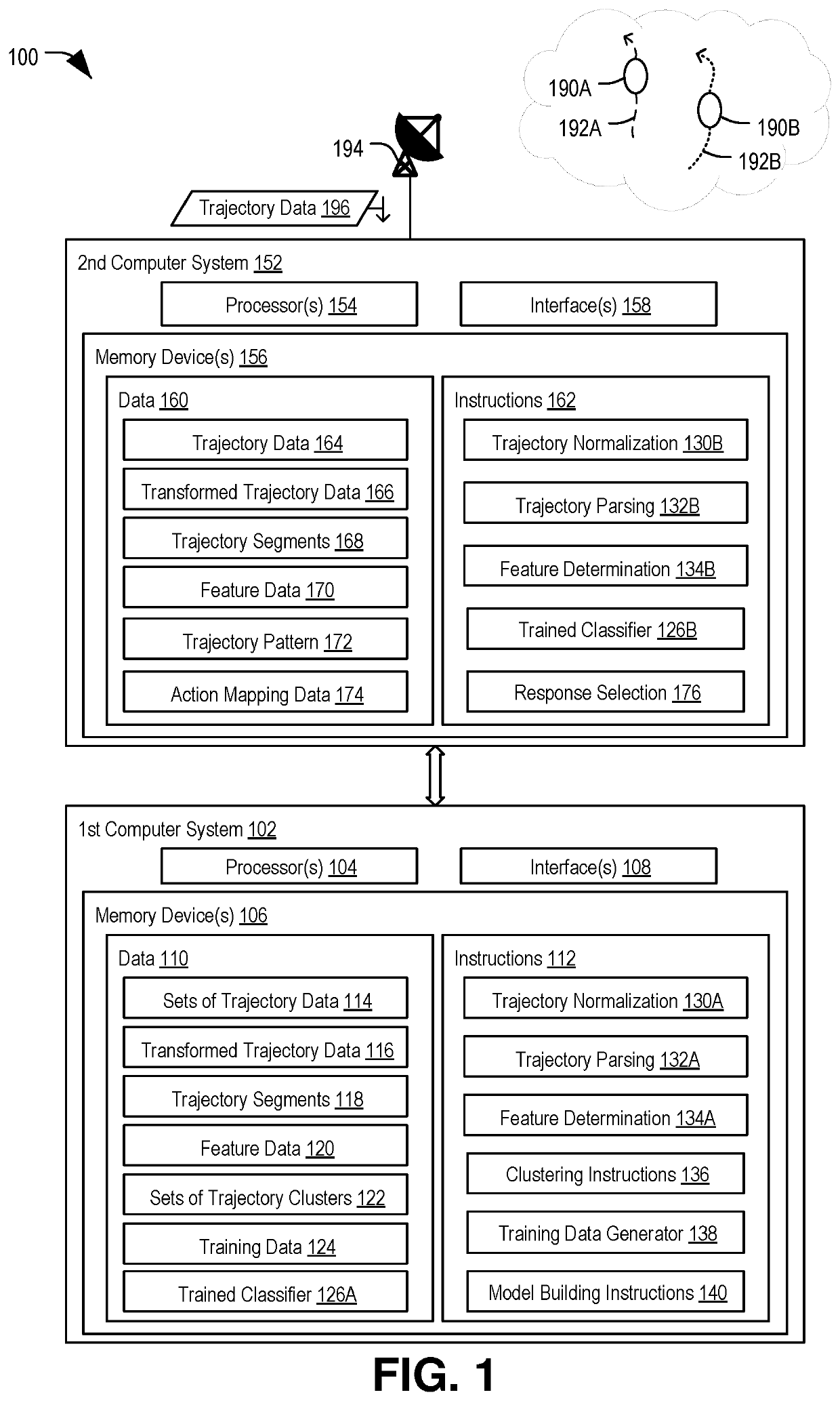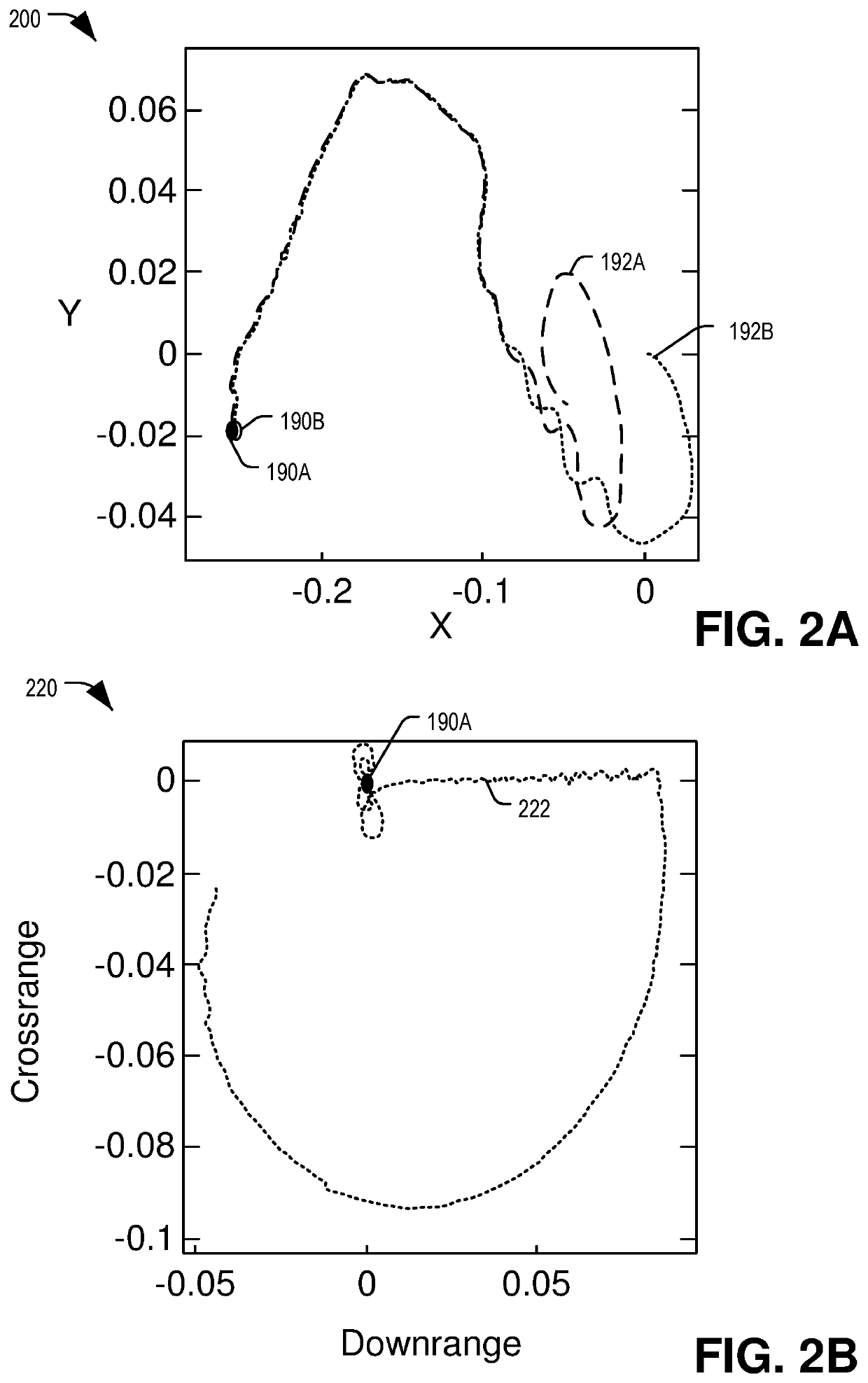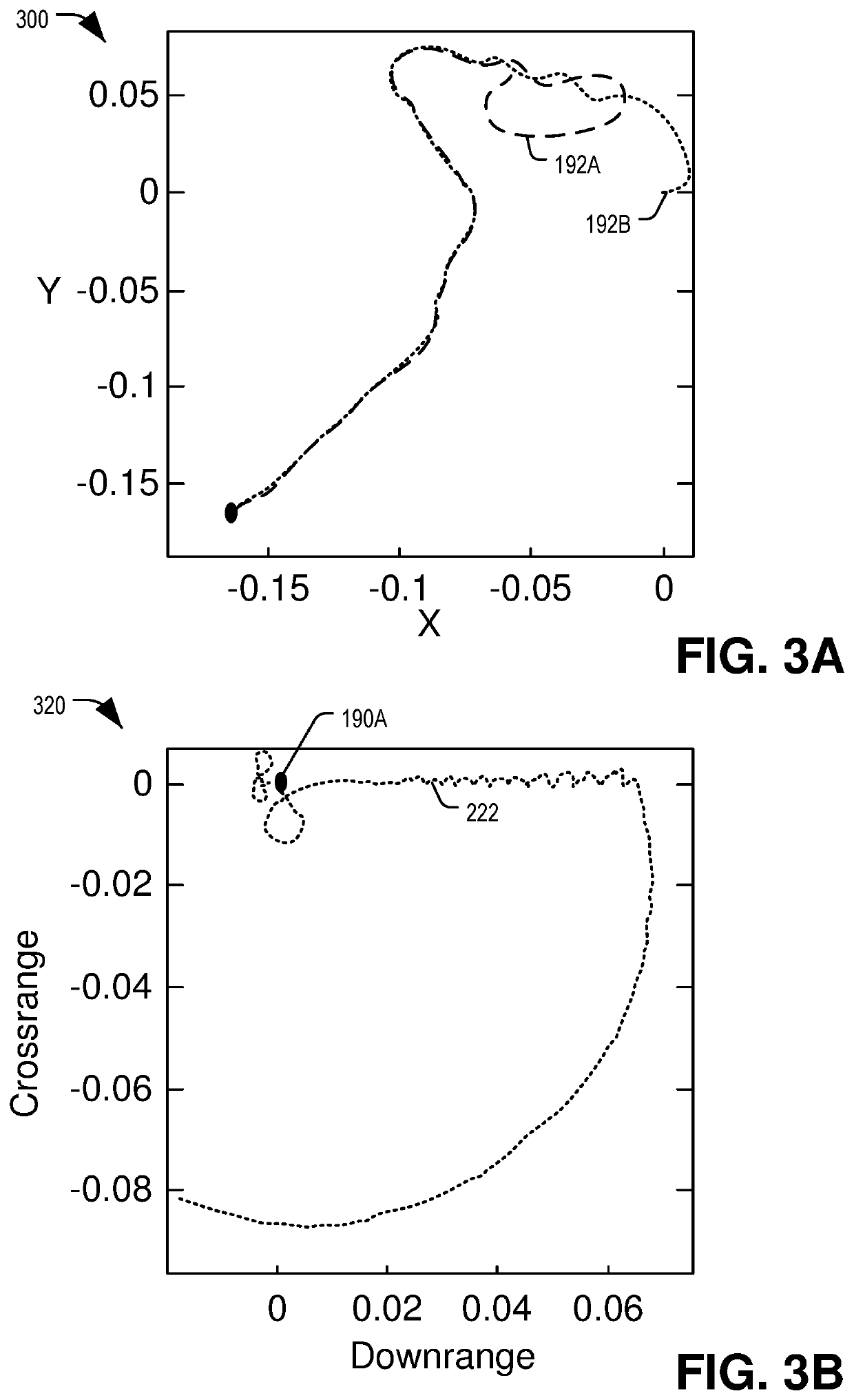Trajectory classification and response
a technology of trajectory and response, applied in the direction of vehicle position/course/altitude control, process and machine control, instruments, etc., can solve the problems of increasing complexity of trajectory-based decision-making, complicated trajectory-based decision-making, and increasing complexity
- Summary
- Abstract
- Description
- Claims
- Application Information
AI Technical Summary
Benefits of technology
Problems solved by technology
Method used
Image
Examples
Embodiment Construction
[0021]Aspects disclosed herein present systems and methods for trajectory classification and response. Historical or simulated trajectory data is used to train a machine learning system to classify the movements of two or more objects into a set of recognized trajectory patterns, to predict near-term future movements of the two or more objects, to recommend or implement responses based on movements of two or more objects, or combinations thereof. The historical or simulated trajectory data for objects is normalized to a reference frame associated with one of the objects (e.g., a reference object) to produce normalized trajectory data. In the normalized reference frame, the movement of the reference object is projected along a single axis (or otherwise constrained in a manner that simplifies computation) and the movements of the other objects are described relative to the reference object. Transforming the trajectory data to the normalized reference frame reduced dimensionality of th...
PUM
 Login to View More
Login to View More Abstract
Description
Claims
Application Information
 Login to View More
Login to View More - R&D
- Intellectual Property
- Life Sciences
- Materials
- Tech Scout
- Unparalleled Data Quality
- Higher Quality Content
- 60% Fewer Hallucinations
Browse by: Latest US Patents, China's latest patents, Technical Efficacy Thesaurus, Application Domain, Technology Topic, Popular Technical Reports.
© 2025 PatSnap. All rights reserved.Legal|Privacy policy|Modern Slavery Act Transparency Statement|Sitemap|About US| Contact US: help@patsnap.com



